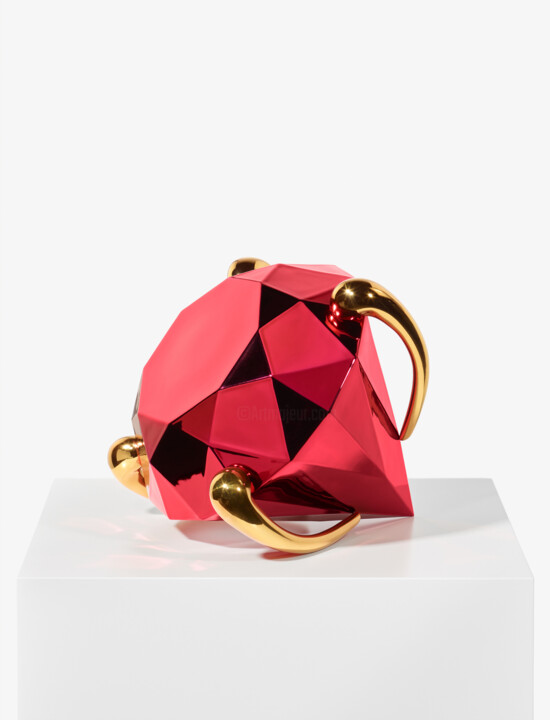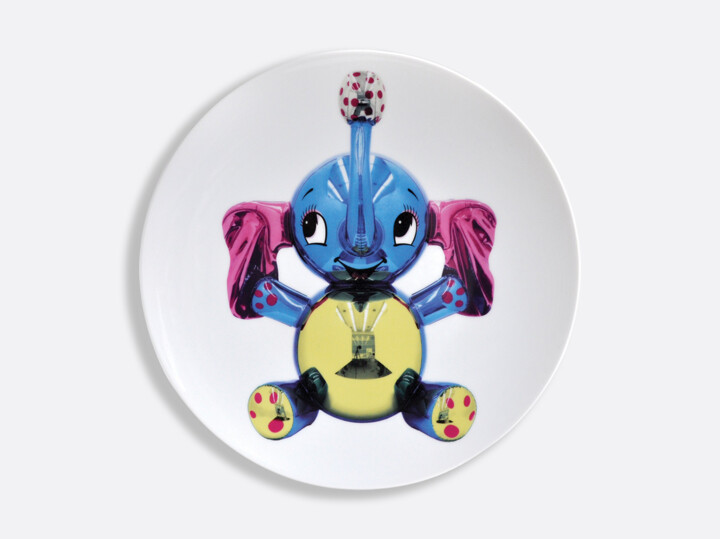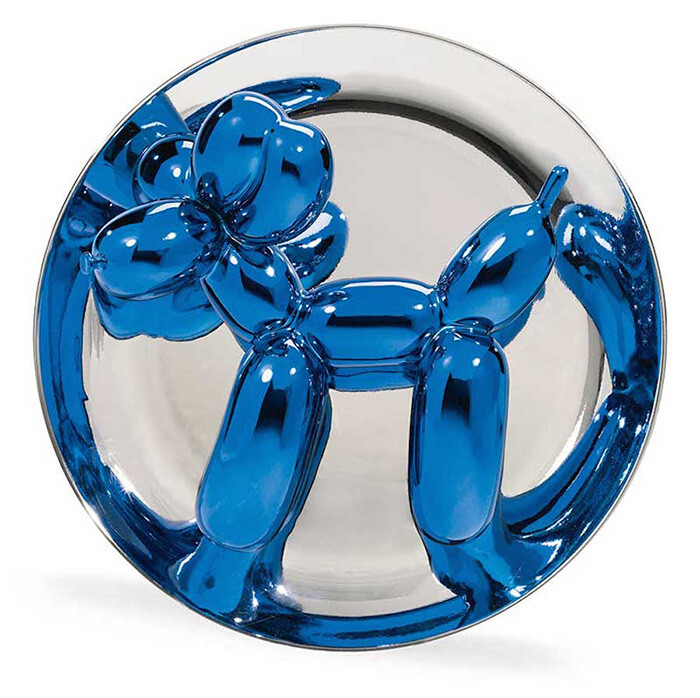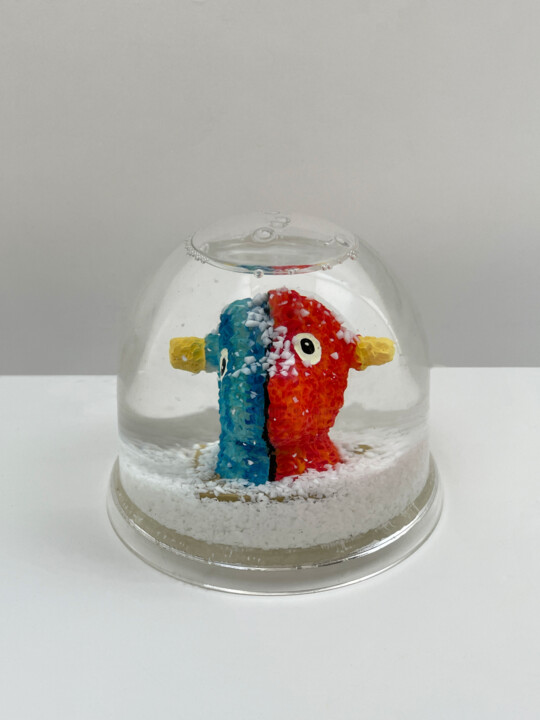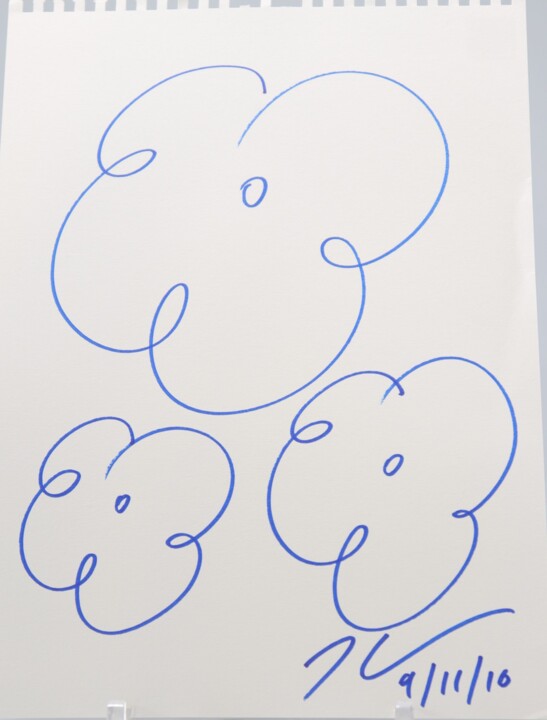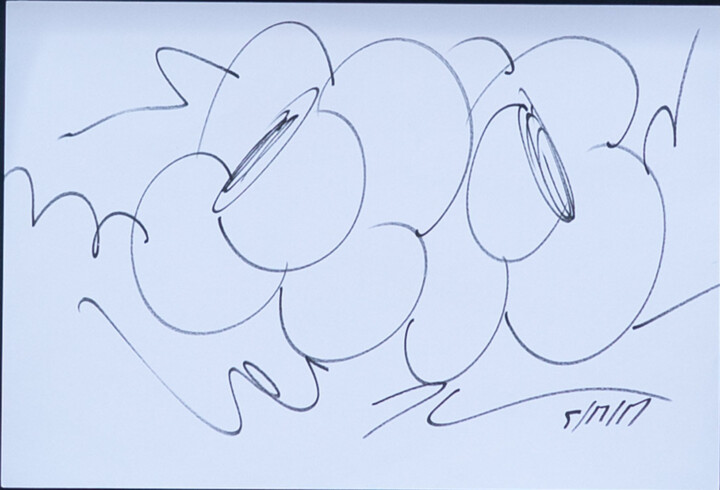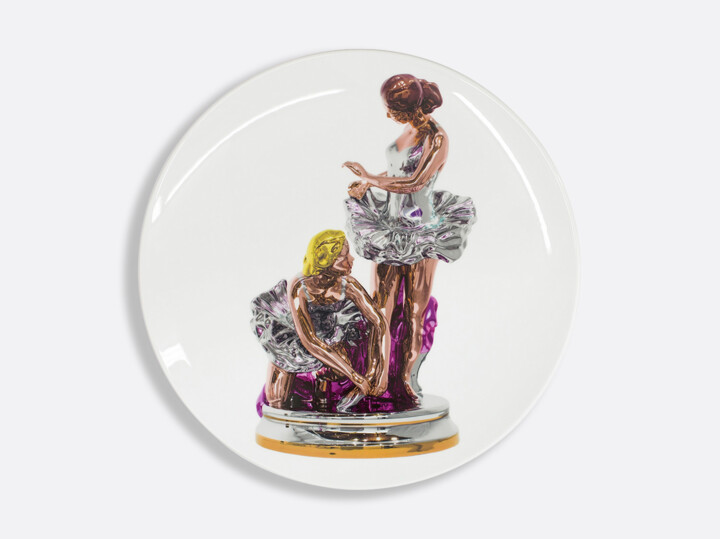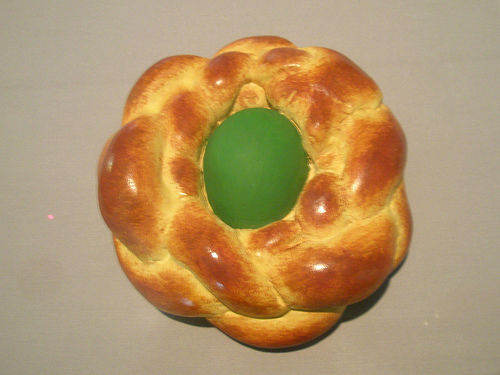Jeff Koons, Baloon monkey, 2006 - 2013. Mirror-polished stainless steel, 381 x 596.9 x 320 cm. Courtesy Private Collection.
Jeff Koons is the protagonist of the exhibition Shine, which began in October 2021 at Palazzo Strozzi (Florence, Italy) and will continue until the end of January 2022. The blockbuster event, born from the collaboration of the Florentine institution with the American artist, has brought together the latter's iconic works, those that have become part of the collective imagination, since they are able to combine popular culture, known by the masses, with high references taken from the world of art history. Moreover, this exhibition, reported as one of the major events of contemporary art in Italy, has also become a symbol of the cultural restart of the country after the pandemic.
The event is titled Shine, or glow, because the peculiarity of many of the masterpieces on display is that they are made of reflective metals, which allow them to capture what is in the surrounding environment, including viewers. In this way, visitors, who become part of the works, find themselves suspended between the real and the imaginary, coming to question their relationship with reality and the work of art itself.
Following the aforementioned theme of the glow, these paintings and sculptures, taken from the most important collections and major international museums, have been collected within the space of Palazzo Strozzi in a conceptual, rather than chronological, order.
A secondary concept made explicit by the exhibition is that of breath, which acquires a real physicality through some of the works on display, including the Gazing ball and the Baloon dog. In fact, both the blown glass spheres of Gazing ball and the balloon of Baloon dog represent objects that enclose, transmit and preserve the human breath.
Regarding the location, the environment of the Florentine institution has been specially modified for the event, so much so that the coverings that usually cover the interiors have been almost entirely removed, in order to guarantee a perfect fruition of the work of the American artist.
Among all the sculptures in the exhibition, Baloon dog, Gazing ball (Diana) and Seated Ballerina have certainly represented great sources of inspiration for artists from all over the world, including those of Artmajeur. In fact, the highly original sculptures of Shake, Andrea Giorgi and Oleksandr Balbyshev seem to have taken Koons' lesson as an example.
Jeff Koons, Baloon dog (Red), 1994 - 2000. Mirror-polished stainless steel, 307.3 x 363.2 x 114.3 cm. Private collection.
Jeff Koons, Baloon dog
The Baloon dog by Jeff Koons is a red sculpture, made of stainless steel, which reproduces a dog made of balloons. This subject is clearly inspired by Duchamp, because it represents a de-contextualization of an everyday object, such as a balloon, which in this case is transformed into a work of art. The Baloon dog, however, unlike the cold works of the French artist, deals with themes full of emotion, such as those of celebration, games and childish happiness. In fact, the sculpture is part of the series of works entitled Celebration which, created by the artist between the mid-1990s and the early 2000s, is aimed at reproducing objects linked to important and happy occasions. Despite this joyful emotionality, the idea for this group of works was born in a difficult period for Koons, who was estranged from his son, due to the separation from his wife, the porn star Ilona Staller.
Returning to Baloon dog, it is important to consider a contradiction: it is a balloon that can neither fly nor burst, because it is huge, heavy and solid. Steel, which makes the sculpture weld on the ground, is a popular material, now used to create an important work of art. Consequently, Koons' sculpture has ennobled a metal widely used by consumer society, which the American artist wanted to bring together around the important events evoked by his work. The spectator also takes part in these celebrations and, reflected in the glittering works, is involved, feeling a great sense of joy and amazement.
Finally, it is good to underline how the subject of the Baloon dog has been widely investigated by the artist, who has proposed it in several versions, characterized by different colors, materials and sizes. A very lucky Baloon dog was the one made in orange color, which was sold at auction by Christie's at the highest price in history for a living artist.
Shake, Balloongold, 2021. Resin and spry, 20x22x9 cm.
Shake, Balloongold
Shake's balloon dog, though made shiny by the final paint job, lacks the ability to reflect, which gives Koons' works the power to "fly." As a result, the sculpture of the artist of our gallery, losing the aforementioned peculiarity, also detaches itself from the link with play, happy events and the strong emotionality that accompanies them.
The Balloongold made of resin, besides appearing heavier and welded on the ground than the original, is also less realistic in its realization, which is lacking in fine details. In spite of this, the sculpture clearly appears to the observer as the remake of a balloon dog, therefore, also in this case the references to the Duchampian Ready-made remain unchanged.
With regard to the ennobling of the sculptural material used, Balloongold's resin, lacking the quality of luster, cannot aspire to Koonsian "social elevation." Finally, Shake's sculpture, unable to reflect its surroundings, including the visitor, is permanently deprived of its connection to the present. The work of the artist of our gallery, however, acquires other meanings, in fact, the surface of the new-pop sculpture is now colored with the technique of spray painting, typical of street art, and decorated according to an abstract motif. As a result, Balloongold is a sculpture that encompasses several examples from the history of art.
Jeff Koons, Gazing Ball (Diana), 2013. Plaster and glass, 174.9 x 80.6 x 102.6 cm.
Jeff Koons, Gazing Ball (Diana)
The sculpture Gazing Ball (Diana) is part of the famous Gazing Ball series, in which Koons proposes copies of some famous works of art, both paintings and sculptures, enriched by the presence of a shiny and reflecting blue glass sphere. The plaster copies represent a clear homage by the artist to the great protagonists of the history of art of the past, while the presence of the spheres concretizes the dialogue between different subjects and materials, which, on this occasion, acquire equal dignity.
These spheres, made of blue blown glass, are the result of the work of skilled workers of Pennsylavania, who wanted to reproduce the features of a typical ornament of the gardens of the American province. In reality, however, the spheres have much more ancient origins, appearing for the first time in Italy in the thirteenth century and having been the subject of representation by artists such as Bellini, Dürer and Leonardo.
Finally, it is important to highlight how all the works of Gazing Ball have the peculiarity of combining the classical repertoire to the conceptual element of the sphere, which reflects, in a given place and time, the environment and the viewer.
In the specific case of Gazing Ball (Diana), the cast of the statue by Christophe Gabriel Allegrain, dating back to 1778 and kept at the Louvre Museum in Paris, is reproduced. Koons chose the rococo artist because this style has always been a great source of inspiration for him. Just like the plaster of Diana, all Gazing ball works exclusively reproduce works, which have been very important for his education.
Andrea Giorgi, Juggler (Glossy White), 2016. Resin, 42x48x40 cm.
Andrea Giorgi, Juggler (Glossy White)
The work of Andrea Giorgi do not has the celebratory intent of Koons's one, since it does not represent a copy of a classical sculpture, such as the Diana, but a resin figure made personally by the artist. Consequently, in the work of the Italian there is no union of the classical repertoire, represented by the sculpture, with the conceptual element of the sphere. The sphere, however, remains a fundamental element in Giorgi's work, so much so that it has been multiplied in several examples, which aim to capture the present from different angles.
As for the male figure, it was sculpted in resin, a non-reflective but shiny material, halfway between the opaque plaster of Gazing bal and the shining steel of Baloon dog. As a result, Giorgi has given life to a very personal interpretation of some of the key motifs of Koons' work: the glossy, but not reflective, and the spheres, which on this occasion have multiplied. Finally, the spheres bring back to the Italian artist's work the presence of the vital breath that had characterized Gazing Ball, Baloon Dog and the series of inflatables.
Jeff Koons, Seated Ballerina
The Seated Ballerina, part of the Antiquity series, is a steel sculpture, born from the inspiration that the artist has drawn, both from a porcelain doll, caught in the intent to put on the shoes to sit, and the work of Degas. The dancer represents a piece of minimal baroque, with simple forms, characterized by the polychrome coloring of its reflective steel.
The American artist created this sculpture to give life to a new Venus, the bearer of the values of femininity, beauty and quiet, but also those of hope, confidence in the future and self-confidence. In fact, the viewer who is mirrored in the sculpture gets to see the best version of himself, as he absorbs some of the dancer's beauty.
Oleksandr Balbyshev, Ballerina lenochke with piggies, 2018. Ceramica, plastica e resina, 20 x 12,5 x 19 cm.
Oleksandr Balbyshev, Ballerina lenochke with piggies
Balbyshev's Dancer, perfectly resumes, albeit with some funny additions, the features of the original work. This sculpture, however, was made of resin, ceramic and plastic, non-reflective materials. As a result, in the Ukrainian artist's dancer, the viewer, who can now no longer be mirrored in the work, is deprived of the chance to see the best version of himself. In fact, this Venus, ironically disfigured in her beauty, grace, and femininity, rather than urging the viewer to bring out the best in him or her, seems to invite him or her to take life and one's flaws with irony.
Continue to discover moreworks of art in our gallery that reference Koons' artworks by browsing our collection called: Koons' Interpretations



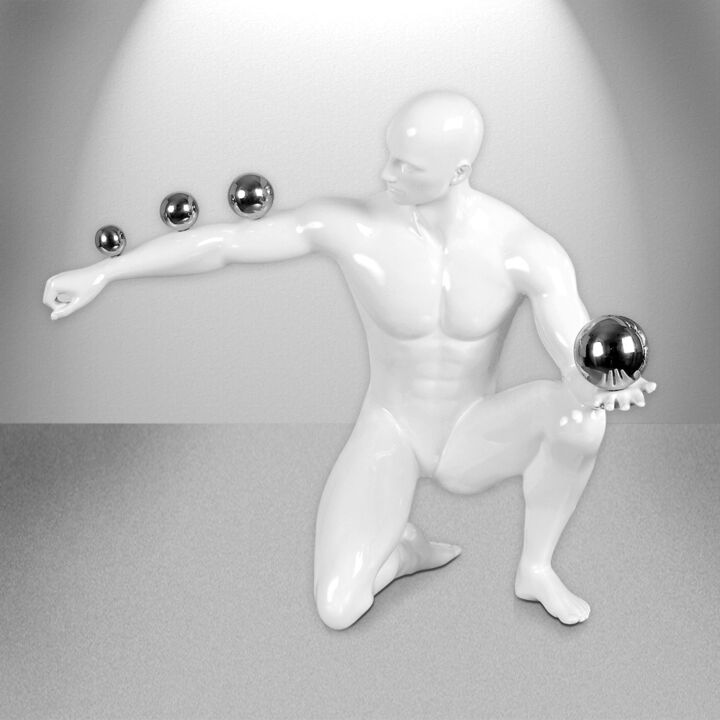
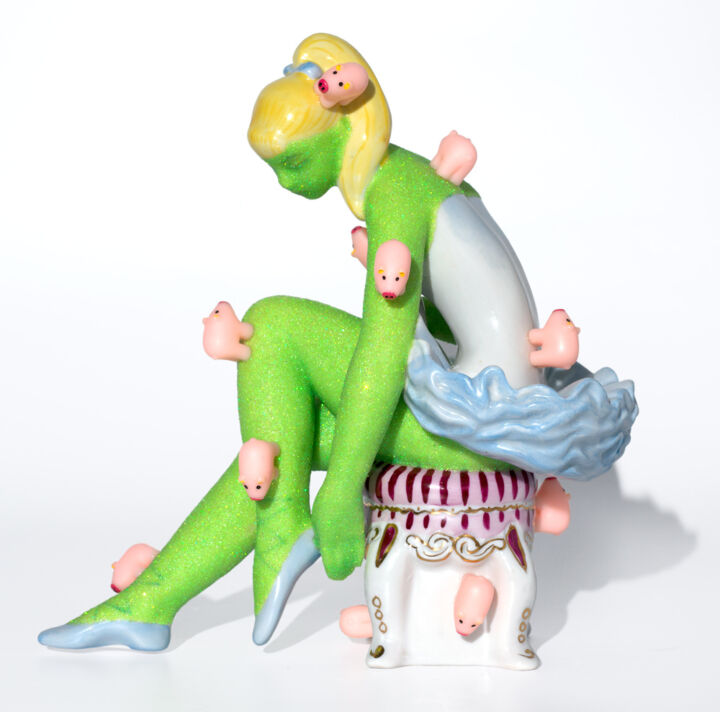
 Olimpia Gaia Martinelli
Olimpia Gaia Martinelli

